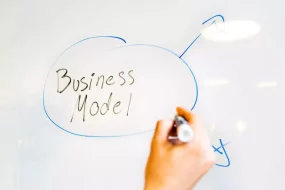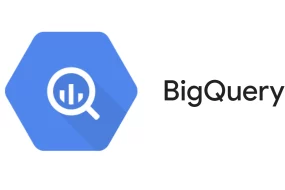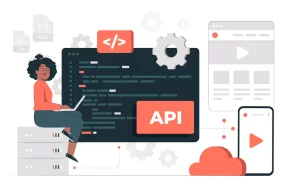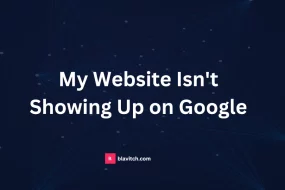
In the fast-paced world of business, success often hinges on your ability to adapt, innovate, and stay ahead of the competition. To navigate these dynamic waters, having a clear and strategic plan is essential. This is where the Business Model Canvas (BMC) comes into play. It’s a powerful tool that helps you map out your business strategy and ensure every aspect of your enterprise aligns with your goals. In this comprehensive guide, we’ll explore the Business Model Canvas, how to use it effectively, and its potential to drive your business toward prosperity.
What is the Business Model Canvas?
The Business Model Canvas is a strategic management and entrepreneurial tool developed by Alexander Osterwalder and Yves Pigneur in their book “Business Model Generation.” It’s designed to help businesses describe, design, challenge, invent, and pivot their business models. This one-page framework, often compared to a blueprint for your business, consists of nine key building blocks, each representing a crucial aspect of your organization:
- Customer Segments: Identifying the specific groups of customers your business aims to serve.
- Value Proposition: Determining the unique value your product or service offers to your target customers.
- Channels: Choosing the most effective ways to reach and interact with your customers.
- Customer Relationships: Defining the type of relationships you want to establish with your customers.
- Revenue Streams: Identifying the sources of income for your business.
- Key Resources: Listing the critical assets and resources required to operate your business.
- Key Activities: Identifying the core activities necessary to deliver your value proposition.
- Key Partnerships: Describing the external organizations or individuals that can help your business thrive.
- Cost Structure: Detailing the costs associated with operating your business.
Why Use the Business Model Canvas?
The Business Model Canvas offers several compelling advantages for businesses of all sizes. Let’s delve into some of the key benefits that make it an indispensable tool for strategic planning.
1. Clarity and Focus
The BMC simplifies complex business models into an easily digestible format. This clarity helps you and your team focus on the most critical elements of your business strategy. By visualizing your business model on a single page, you can quickly grasp the interrelationships between different components and ensure that they align with your overall vision.
2. Enhanced Communication
Clear communication is vital in business. The Business Model Canvas provides a common language for all team members, stakeholders, and partners. It ensures that everyone understands and agrees on the key aspects of your business model, making collaboration smoother and more efficient.
3. Adaptability
In today’s rapidly changing business landscape, adaptability is a key to survival. The BMC makes it easier to pivot and refine your business model as needed. By updating individual building blocks, you can experiment with new strategies and quickly respond to market changes.
4. Innovation
The BMC encourages creative thinking and innovation. It prompts you to question and challenge your assumptions, fostering a culture of continuous improvement and creativity within your organization.
5. Cost-Effective
Creating a Business Model Canvas is a cost-effective way to develop, test, and iterate on your business model. It requires fewer resources than traditional business plans, making it a practical choice for startups and established businesses alike.
6. Improved Decision-Making
The visual representation of your business model allows for more informed and data-driven decision-making. It’s easier to evaluate the impact of different choices and scenarios by analyzing how changes in one building block can affect the entire model.
How to Create a Business Model Canvas
Now that you understand the importance of the Business Model Canvas, let’s walk through the steps to create one for your business. Remember, it’s a flexible tool that can be adapted to suit your specific needs.
Step 1: Start with a Blank Canvas
Begin with a blank canvas or a template that includes the nine building blocks. You can draw one on a physical board or use various digital tools and software for this purpose.
Step 2: Define Your Customer Segments
Identify and list the different groups of customers that your business serves. Think about their needs, preferences, and behaviors. Be specific, as understanding your customers is fundamental to your success.
Step 3: Create Your Value Proposition
For each customer segment, outline the unique value your product or service delivers. What problems does it solve, and what benefits does it offer? Your value proposition should be clear and compelling.
Step 4: Determine Your Channels
Consider the most effective channels for reaching your customers. These could be physical stores, websites, social media, or a combination of various methods. Map out how you plan to distribute your value proposition to your target audience.
Step 5: Define Customer Relationships
Specify the type of relationship you want to establish with your customers. Are you providing personalized support, self-service options, or a community platform? This step helps you tailor your approach to your customer’s expectations.
Step 6: Identify Revenue Streams
Clearly outline how your business generates revenue. This could include sales, subscriptions, licensing, advertising, or any other income sources that apply to your business.
Step 7: List Key Resources
Determine the essential resources and assets your business needs to operate. These could include physical assets like machinery or intellectual assets like patents and trademarks. Make sure to include both tangible and intangible resources.
Step 8: Specify Key Activities
Describe the core activities that are essential for delivering your value proposition and running your business. These activities should align with your business’s mission and strategy.
Step 9: Identify Key Partnerships
List any external organizations, suppliers, or partners that play a significant role in your business model. Partnerships can help you reduce costs, access resources, or expand your reach.
Step 10: Detail Cost Structure
Finally, outline the costs associated with your business. This includes both fixed costs (e.g., rent, salaries) and variable costs (e.g., production costs, marketing expenses). Understanding your cost structure is crucial for managing your finances effectively.
Step 11: Review and Refine
After completing each building block, take a step back and review your Business Model Canvas as a whole. Ensure that all components align with your overall strategy and vision. If necessary, make adjustments and refinements.
Tips for Effective Business Model Canvas
Creating a Business Model Canvas is just the beginning. To make the most of this tool, consider the following tips:
- Collaborate: Involve key members of your team and other stakeholders when developing your BMC. Their insights can provide a well-rounded perspective on your business model.
- Regular Updates: Your business isn’t static, so your BMC shouldn’t be either. Regularly revisit and update your canvas as your business evolves and grows.
- Market Research: Thoroughly research your customer segments and competition to ensure your canvas accurately reflects market realities.
- Be Concise: Keep your descriptions brief and to the point. The goal is clarity, not complexity.
- Test Assumptions: Don’t take anything for granted. Challenge your assumptions, and be open to making changes based on feedback and data.
- Use Visuals: Visual aids like charts, graphs, and icons can make your canvas more engaging and easier to understand.
- Prioritize: Highlight your most critical building blocks. What are the key components driving your business’s success?
- Experiment: Be open to experimentation and testing different scenarios within your BMC to discover the most effective strategies.
Examples of Business Model Canvas
To illustrate the effectiveness of the Business Model Canvas, let’s explore two well-known companies, Airbnb and Spotify, and how they use this tool to shape their business strategies.
Airbnb
Customer Segments: Travelers seeking unique accommodations and hosts looking to rent out their spaces.
Value Proposition: A platform connecting travelers to unique and affordable lodging options worldwide.
Channels: Website and mobile app for booking accommodations, with user reviews and photos.
Customer Relationships: Online messaging and support for both travelers and hosts, ensuring trust and satisfaction.
Revenue Streams: Commission on each booking and additional services like Airbnb Experiences.
Key Resources: Technology platform, a global network of hosts, and a trusted brand.
Key Activities: Maintaining the platform, ensuring quality standards, and marketing.
Key Partnerships: Collaborations with hosts, governments, and travel organizations.
Cost Structure: Investments in technology, customer support, and marketing.
Spotify
Customer Segments: Music enthusiasts looking for a convenient and affordable way to access music.
Value Proposition: A music streaming platform with a vast library, personalized playlists, and the ability to discover new music.
Channels: Mobile and desktop apps, partnerships with device manufacturers.
Customer Relationships: Providing easy-to-use, personalized music streaming with premium features.
Revenue Streams: Premium subscriptions, advertising, and partnerships with artists and record labels.
Key Resources: Music library, technology platform, and user data.
Key Activities: Music licensing, platform development, and content curation.
Key Partnerships: Record labels, artists, and advertisers.
Cost Structure: Licensing fees, technology development, and marketing expenses.
These examples demonstrate how the Business Model Canvas can succinctly outline a company’s core strategies and help straightforwardly visualize its entire business model.
Conclusion
In a competitive business environment, having a clear and adaptable strategy is paramount. The Business Model Canvas is a versatile and effective tool that can help businesses of all sizes and industries chart their course to success. By breaking down your business model into nine key building blocks, you gain clarity, enhance communication, and stimulate innovation.
Remember that the Business Model Canvas is not a static document but a dynamic tool that evolves with your business. Regularly revisiting and updating it can help your organization remain agile and responsive to market changes. So, whether you’re a startup entrepreneur or a seasoned business owner, harness the power of the Business Model Canvas to drive your business toward prosperity and growth.
By adopting this tool and continually refining your business strategy, you’ll be better equipped to navigate the ever-changing landscape of commerce and steer your enterprise toward long-lasting success. So, seize the opportunity to create your Business Model Canvas, and watch your business thrive in the face of evolving challenges and opportunities.







